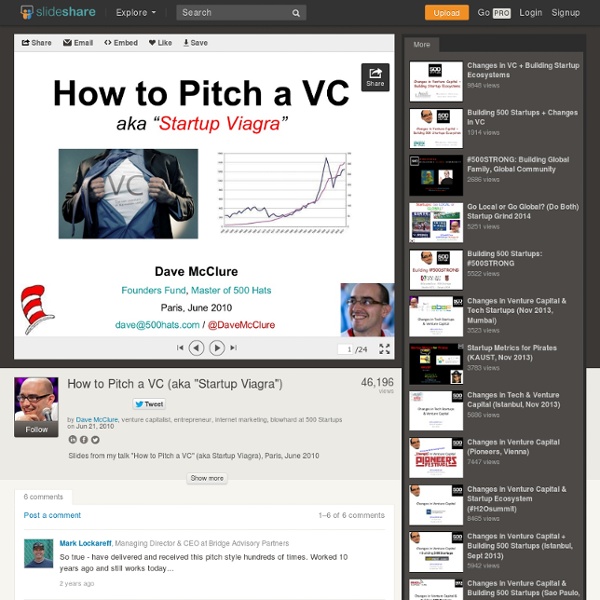



Subject: Airbnb Yesterday Fred Wilson published a remarkable post about missing Airbnb. VCs miss good startups all the time, but it's extraordinarily rare for one to talk about it publicly till long afterward. So that post is further evidence what a rare bird Fred is. Reading Fred's post made me go back and look at the emails I exchanged with him at the time, trying to convince him to invest in Airbnb. Fred and the Airbnb founders have generously agreed to let me publish this email exchange (with one sentence redacted about something that's strategically important to Airbnb and not an important part of the conversation). We do a lot of this behind the scenes stuff at YC, because we invest in such a large number of companies, and we invest so early that investors sometimes need a lot of convincing to see their merits. from: Paul Graham to: Fred Wilson, AirBedAndBreakfast Founders date: Fri, Jan 23, 2009 at 11:42 AM subject: meet the airbeds There's no reason this couldn't be as big as Ebay. --pg Brian
MoneyBall for Startups: Invest BEFORE Product/Market Fit, Double-Down AFTER My apologies... this is a long piece (~2500 words). Not for the faint of heart. If you want the short story, read the abstract below & 3 core assertions, then cut to the conclusions at the bottom. Abstract: VC funds are getting smaller (good), & angel investors are growing (also good), but both need to get smarter & innovate. What does this mean? Let's start with 2 intial observations about the current market for investors, and for startups. Assertion #1: Most consumer internet investors (angels, seed funds, big VCs) have no clue what the fuck they're doing. Recently some very smart folks have been talking about the relative [upside/downside] of being a [small/big] investor in tech, and specifically the changes & challenges going on in venture capital in the last decade. IMHO, whether or not your fund is large or small is not the primary issue in consumer internet investing. Let's examine that more closely: Fuck. 1) Build Product. 2) Acquire Customers. it's pretty simple, actually.
Meeting With An Investor? Read This First How LinkedIn first raised money (and endured rejection) LinkedIn went public last week, with investors falling over each other to buy shares at a market cap that now exceeds $9 billion. But it wasn't always so easy for the social network to raise money. LinkedIn employees in 2004 (Hower is 5th from right), upon hitting 500k users By Lee Hower, contributor LinkedIn went public last week. As a shareholder and part of the founding team, I'm obviously pleased with the investor reception it has received. A lot of people ask me what it was like raising the Series A venture capital round for LinkedIn (LNKD) back in 2003. First, you have to rewind mentally to early 2003. Salesforce.com (CRM) is a startup with 76,000 subscribers (over 2.1 million today). Online social networking is a concept still being evangelized even in Silicon Valley: Friendster is in private beta (wasn't until Oct 2003 it received a Google acquisition offer, which it turned down for a Kleiner/Benchmark round). Pitching to Sand Hill Road Ok, now you have the context for early 2003.
How to Raise Money September 2013 Most startups that raise money do it more than once. A typical trajectory might be (1) to get started with a few tens of thousands from something like Y Combinator or individual angels, then (2) raise a few hundred thousand to a few million to build the company, and then (3) once the company is clearly succeeding, raise one or more later rounds to accelerate growth. Reality can be messier. Some companies raise money twice in phase 2. Others skip phase 1 and go straight to phase 2. This essay focuses on phase 2 fundraising. Forces Fundraising is hard in both senses: hard like lifting a heavy weight, and hard like solving a puzzle. To founders, the behavior of investors is often opaque—partly because their motivations are obscure, but partly because they deliberately mislead you. If you're an inexperienced founder, the only way to survive is by imposing external constraints on yourself. The ultimate source of the forces acting on you are the forces acting on investors.
Post-Money Evaluations On a startup’s fundraising process >>> In a seed round, you should use a standard term sheet and agree on basic terms to keep legal fees low.A simple Series A term sheet should have no special dividends, no registration rights, and limited protective provisions — just a simple 1x, non-participating preferred with standard anti-dilution, conversion, pre-emptive, ROFR and co-sale rights.Raising money is a trade-off between valuation and control.The success of a venture deal, in general, is the inverse proportion of the number of venture capitalists (non-independent, non-operators) on a startup’s Board of Directors.New York VCs (and other east coasters) have an advantage to win European startup financings — mainly because of the time zone difference between Europe and Silicon Valley.When an entrepreneur is planning to raise money, providing potential investors with an abridged monthly update is a great way of keeping VCs engaged and interested. (But please, ask first. Building a Company
THE SEVEN BIGGEST STARTUP MYTHS Jared Konczal, who works at the Kauffman Foundation, wrote this important blog post analyzing some of the existing (yet rare) accelerators’ data. In a time when everyone is praising and launching accelerators, it might be a good thing to remind policymakers and VPs of large corporations that if you exclude Y-Combinator, startups accelerators are not doing an excellent job at creating startups! The same goes for Venture Founds making less money than they are spending on startups (cf this Kauffman paper) I pitched this one with Marc a while ago (2009), and most of the people would boo at us. Let’s face it: “mentors” might be the most over-used word after “entrepreneurs” in our little Startup world.